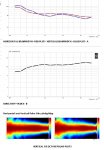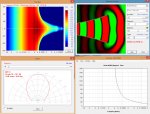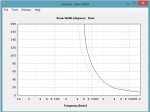Re: 60 Degree DIY Mid Hi
Hi Max,
I would have loved to be able to make the box trapezoidal; the problem is that it becomes too big to fit my original design criteria of a speaker on a stick.
You actually get slight more SPL, but even at 15 degrees it would make the box 530mm wide at the front. This is not to mention the complications of all the mitre angles needed.
1. I'm thinking 15 deg? None of the more popular ground stack boxes are more than 22.5 deg on the edge. The front is already 15" with a full length grille. The reason I might not even bother is because of number 2.
2. I meant the internal baffles. The interior angles are very, very strange when the sides of the box are angled, and they are not parallel to the other side of the pieces (because they are trapezoids).
Honestly, I don't see how it would be worth doing, or even possible, without a very, very large amount of effort and complicated parts. However, it would make the product truly beyond anything else currently in production for the weight, form factor, and output.
Hi Max,
I would have loved to be able to make the box trapezoidal; the problem is that it becomes too big to fit my original design criteria of a speaker on a stick.
You actually get slight more SPL, but even at 15 degrees it would make the box 530mm wide at the front. This is not to mention the complications of all the mitre angles needed.







